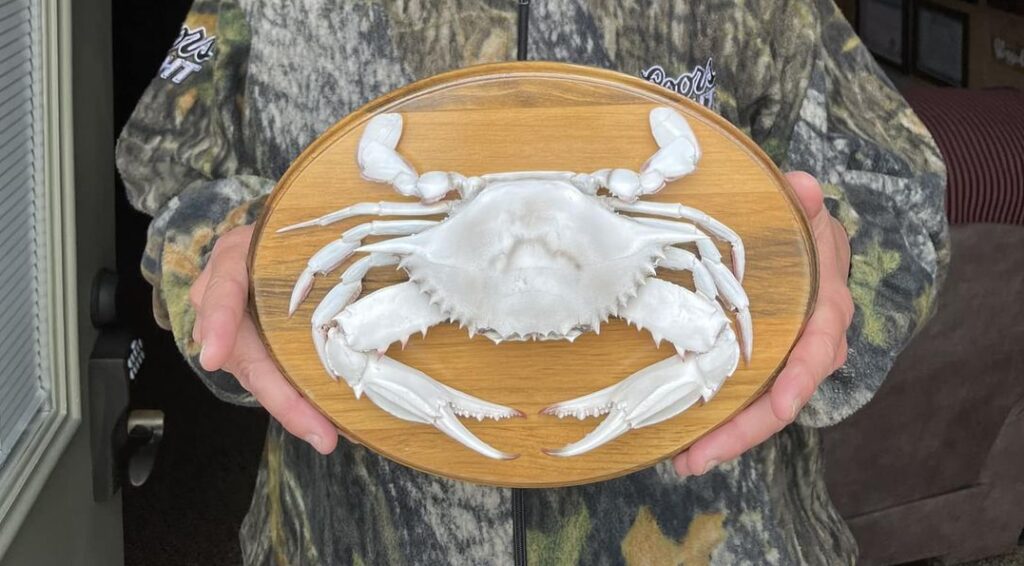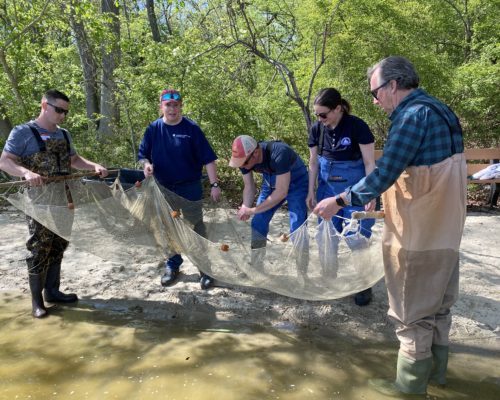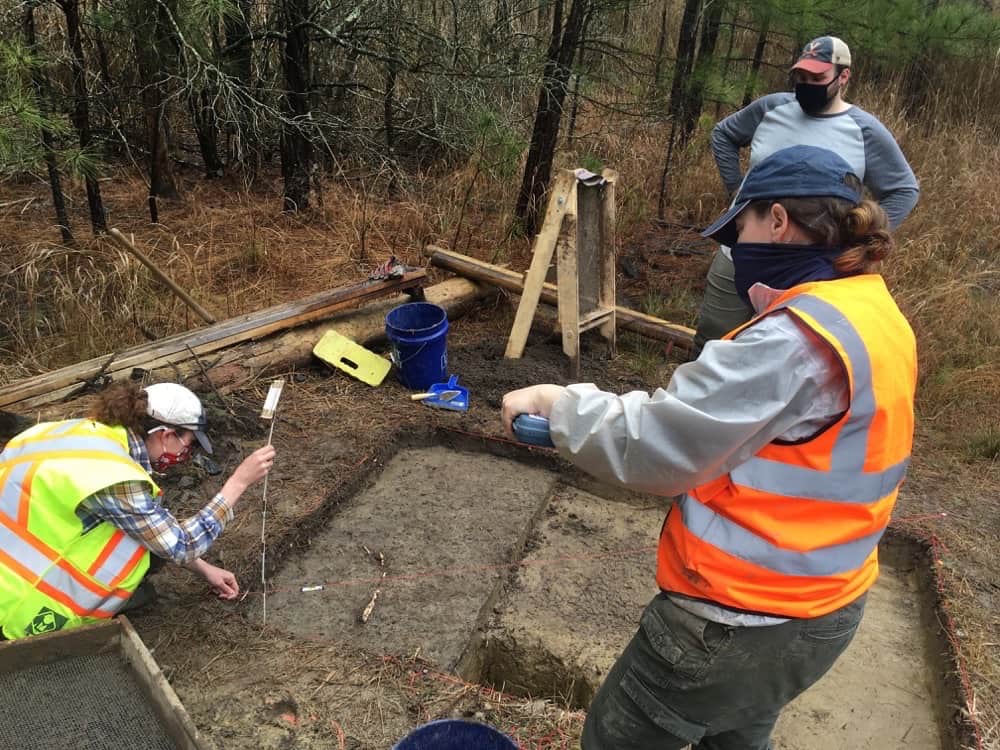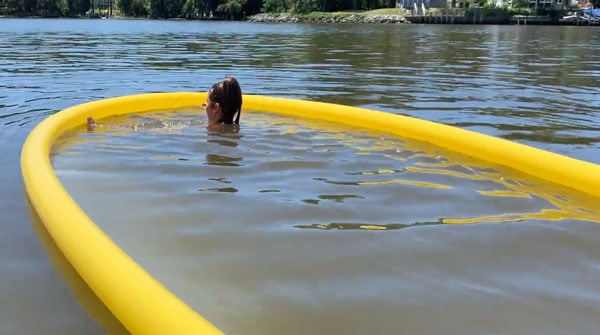In November of 2022, we told the story of Jay Fleming and his incredible experience with an albino crab. Receiving the ghostly-white creature on Halloween night, Fleming was able to photograph the crab and then donate him to the Annapolis Maritime Museum for inclusion in their aquatic tank, which holds other species, such as oysters, spot, perch and more.
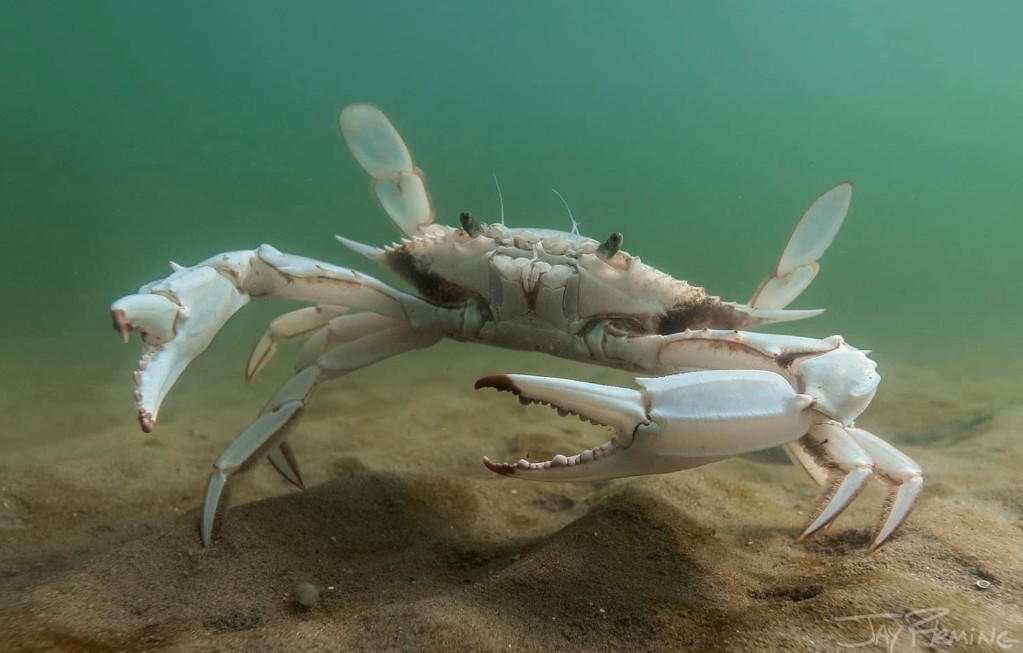
The story took a sad turn when, shortly after its arrival, the crab died of natural causes.
“Crabs are hard to keep in captivity,” Fleming says. “You need circulating Bay water pumps, a diet of razor clams, etc. The setting just wasn’t right.”
The Museum didn’t simply dispose of the crab (or eat it), thankfully. After they returned it to Fleming, he did what anyone would do: he put it in his freezer.
“I had it in my freezer for about a year,” he says. “But then I bought a house, and as I was cleaning it out, I remembered that I had it.”
Fleming knows watermen who have preserved crabs. “My friend in Tangier caught the biggest crab ever, and he wanted to have it stuffed and put on his wall. It’s a way to preserve the crab; it’s a trophy.”
This is, however, a different kind of taxidermy, and it necessitates a specialist. Fleming reached out to Gina Tyler, knowing that she had done similar work for discriminating clients (Chesapeake Bay watermen) and was known for her artistic integrity and attention to detail.
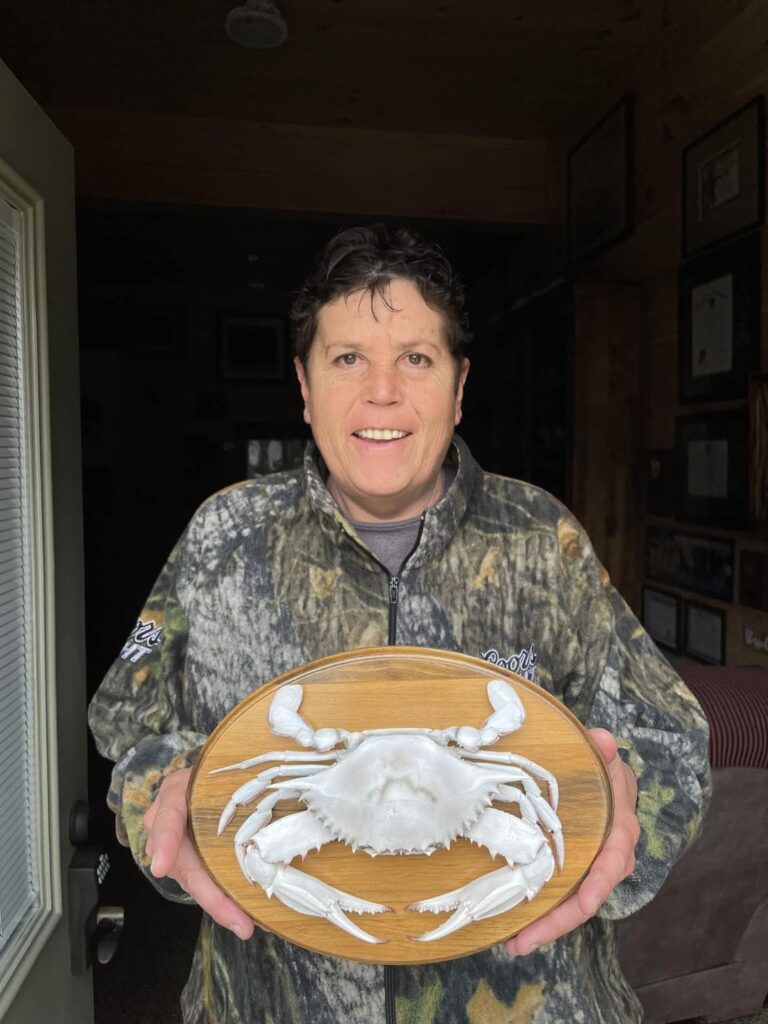
“Gina is from a family that has roots on Smith Island,” Fleming says. “I knew that she was the right person for the job.” Fleming gave Tyler the frozen crab and presently left for a trip to South America.
But when Gina received the crab, she had a moment of doubt. “It’s a completely different way to preserve an animal,” says the full-time corporal with the Maryland Department of Natural Resources Police. For other animals, the animal is skinned and then placed over a foam mold. But not so for the crustaceans.
“For a crab, you’re preserving the crustacean itself,” Tyler says. She started by drilling holes in the crab’s claws, and then soaking the crab in a formaldehyde solution for roughly two weeks. She then allowed the crab to drain and dry, pinning him to a piece of cardboard.
“I pin each leg and his claws, and have to make sure I get his eyes just right, so that he looks alive and not dead. I let him dry for a couple of weeks, if not longer. It’s a long process just to get ready to the point where you’re ready to paint.”
And painting was the hard part.
“It tore my nerves up,” she says. “He wasn’t pure white; he had a bluish tint. And he had dirt on him that I tried to paint back. It took me over two hours to paint the crab, and I was wracking my brain the whole time because I wanted to get it right. Something that unique, you want it to turn out right.”
The final product is Fleming’s original crab preserved to perfection, and he’s headed back to the Annapolis Maritime Museum (once Fleming takes him down off his mantle).
“I thought it would be cool to have it on display for people to see. It was unfortunate he died so quickly, because people were really coming to see him in the tank. This way, they can see my photos of when he was alive, and see him up close and preserved.”
If you’re wondering, the crab does have a name, given to him by Fleming.
“I call him Moby Jim.”

